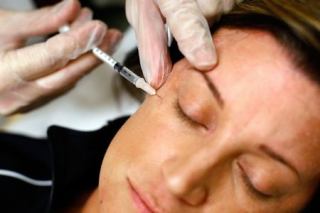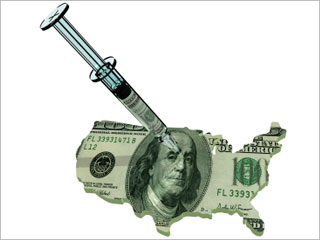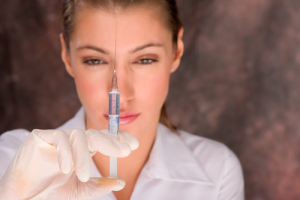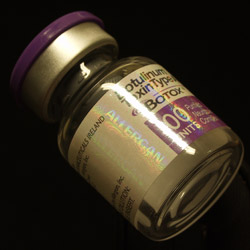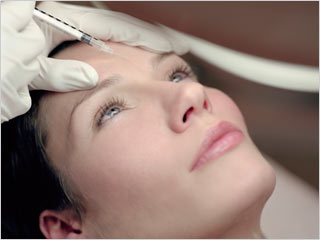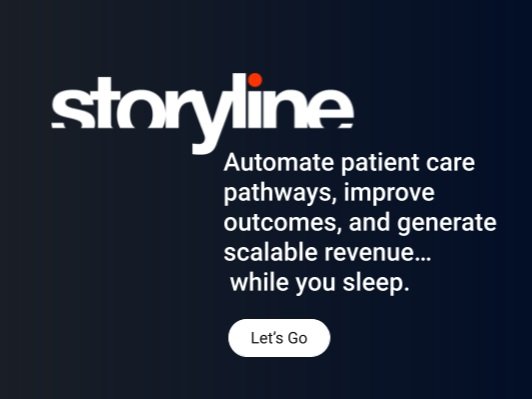Botox vs Dysport: Which one is more effective?
/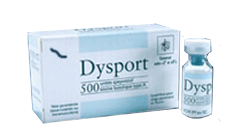 Botox vs Dysport? Well, Dysport as another few arrows in the marketing quiver with a new study that says that Dysport is more effective than Botox in treating glabellar lines.
Botox vs Dysport? Well, Dysport as another few arrows in the marketing quiver with a new study that says that Dysport is more effective than Botox in treating glabellar lines.
Here's a release from the American Academy of Facial Plastic and Reconstructive Surgery (AAFPRS) that claims thta Dysport is actually more effetive than Botox.
The American Academy of Facial Plastic and Reconstructive Surgery (AAFPRS) today announced positive clinical results demonstrating a significant efficacy advantage with Dysport™ (abobotulinumtoxinA) over Botox® Cosmetic (onabotulinumtoxinA) for the treatment of Crow's feet. The data were presented Friday, September 24 at a scientific session at the AAFPRS 2010 Annual Fall Meeting, taking place September 23-26 in Boston.
Downloadable photos, fact sheets and other supporting materials available here: http://www.multimedianewscenter.com/aafprs/dysport-data-shows-superiority-versus-botox-cosmetic
The 90-subject study, titled "Internally Controlled Double-Blind Comparison of Onabotulinum and Abobotulinum Toxin Type A (Nettar, Kartik D., M.D., et. al)," met its primary endpoint (p=0.01) of greater efficacy of action with Dysport™ as defined by investigator assessment of maximum contraction at Day 30 post injection compared to Day 0. Additionally, a secondary endpoint -- subject assessment at maximum contraction at Day 30 compared to Day 0 -- also demonstrated statistical significance with Dysport™ (p=0.027).
"Botox has long been considered the gold standard of injectables, so this data showing Dysport's stronger efficacy is compelling," said Corey S. Maas, M.D., F.A.C.S., AAFPRS Group Vice President for Public and Regulatory Affairs. "Since injectables are the non-surgical cosmetic procedure rising fastest in popularity, it is important to continue honing new applications for existing treatments. Dysport's potential here is exciting as Crow's feet are a common concern for many men and women."
The study concluded that Dysport™ offers a quantifiable and demonstrable advantage in wrinkle effacement (shortening) and hyperfunctional frown lines compared to Botox® Cosmetic in the treatment of Crow's feet. Study investigators recommend further studies in additional facial regions to confirm the data.
Both Botox® Cosmetic and Dysport™ are FDA approved for treatment of moderate-to-severe glabellar lines (vertical lines between the eyebrows); neither product is presently indicated for treatment of Crow's feet. The study was funded by an educational grant from Medicis Aesthetics.
Additional Study Information: The randomized, double-blind, internally-controlled (split face) study was conducted at the Maas Clinic in California. Ninety subjects (75 females, 15 males) with moderate-to-severe lateral orbital rhytids (Crow's feet) were enrolled in the study. Participants received equivalent doses of both treatments: 10 units of Botox® Cosmetic on one side of the face and 30 units of Dysport™ on the other side. Investigator and subject gradings of Crow's feet at relaxation and maximal contraction were obtained using the published validated dynamic and static Merz Crow's feet grading scale before injection (Day 0) and then two, four, six, and 30 days post injection. All patients were photographed in standard five-view series at rest and at maximal contraction in a dedicated photo lane recorded by Mirror software. Additional secondary endpoints not met in the study include investigator assessment at rest at Day 30 (p=0.41) and subject assessment at rest at Day 30 (p=0.28).


